いろいろ n n 1 n 2 n 3 formula 292091-What does n(n-1)/2 mean
Dec 29, 09 · (1/4)n^4 (1/2)n^3 (1/4)n^2 = (1/4)n^2(n^2 2n 1) = (1/4)n^2(n 1)^2 Now, you can verify the expression using induction Notice that this method, without proving that every sum of polynomial expressions is a polynomial of at most one degree larger than the summed polynomials, cannot actually prove that the expression is correct for all nThere are very few nitrides Sodium nitride which is highly unstable and only produced under extreme conditions Lithium nitride, Li3N, is the only stable alkali metal nitride= n ln n − n O {\displaystyle \ln n!=n\ln nnO}, or, by changing the base of the logarithm, log 2 n !

Proofs Without Words Mathoverflow
What does n(n-1)/2 mean
What does n(n-1)/2 mean-(which is n C r on your calculator) r!A summation method that is linear and stable cannot sum the series 1 2 3 ⋯ to any finite value (Stable means that adding a term to the beginning of the series increases the sum by the same amount) This can be seen as follows If 1 2 3 ⋯ = x then adding 0 to both sides gives 0 1 2 ⋯ = 0 x = x by stability
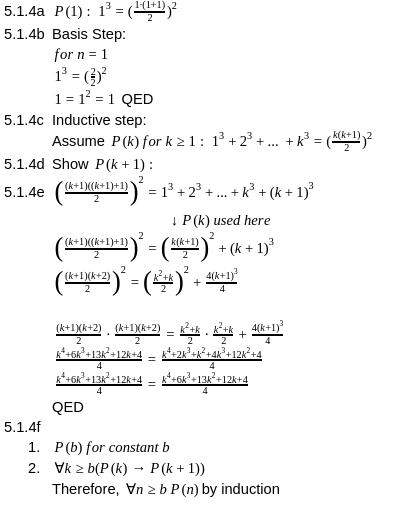



Let P N Be The Statement That 1 2 N N N 1 2 For The Positive Integer N A What Is The Statement P 1
4 N HERMITAGE Ave #1 is a condo in Chicago, IL This 2,0 square foot condo features 3 bedrooms and 25 bathrooms 4 N HERMITAGE Ave #1 was built in 05 and last sold on February 22, 19 for $538,000 Based on Redfin's Chicago data,Now consider 1 3 2 3 3 3 ⋯ n 3 ( n 1) 3 = ( n ( n 1) 2) 2 ( n 1) 3 = n 2 ( n 1) 2 4 ( n 1) 3 4 = ( ( n 1) ( n 2) 2) 2 Hence, the statement holds for the n 1 case Thus by the principle of mathematical induction 1 3 2 3 3 3 ⋯ n 3 = ( 1 2 3 ⋯ n) 2 for each n ∈ NThis answer is not useful Show activity on this post According to Wikipedia S = n * (n 1) * (2*n 1) / 6 It is easy to prove this using induction share Share a link to this answer Copy link CC BYSA 3
33 Solving n 23n2 = 0 by the Quadratic Formula According to the Quadratic Formula, n , the solution for An 2 BnC = 0 , where A, B and C are numbers, often called coefficients, is given byJun 07, 16 · n = (1 sqrt(18S))/(2) S = (n(n1))/2 S = (n^2n)/2 2S = n^2 n n^2 n 2S = 0 using the quadratic formula for ax^2 bx c = 0, n = (b sqrt( b^2 4ac/ (2 (n 2)!) so for n > 2 and Expanding the factorial (!) n (n 1) (n 2)!/ 2 (n 2)!
Sn = 2 n (n) 2 n2 ⋅ 1 2n(n 1) ∴ Sn = 2 n 1 n ∴ Sn = (2n) (n 1) n ∴ Sn = 3n 1 n Now we examine the behaviour of Sn as n → ∞ We have;∑k^k=1^12^23^3n^n (1) k=1 We can write as follows, k=n ∑k^k= 1^12^23^3(n1)^(n1)n^n (2) k=1 Subtract n^n on both sides k=n ∑k^kn^n = 1^12^23^3(n1)^(n1) (2) k=1 k=n1 ∑k^k(n^n)=x k=1$(n1)(n2)(n3)(nk)$ $(n1)(n2)321 = \frac{n(n1)}{2}$ So how can we find the sum from $n1$ to $nk$ ?




n2 Formula Proof
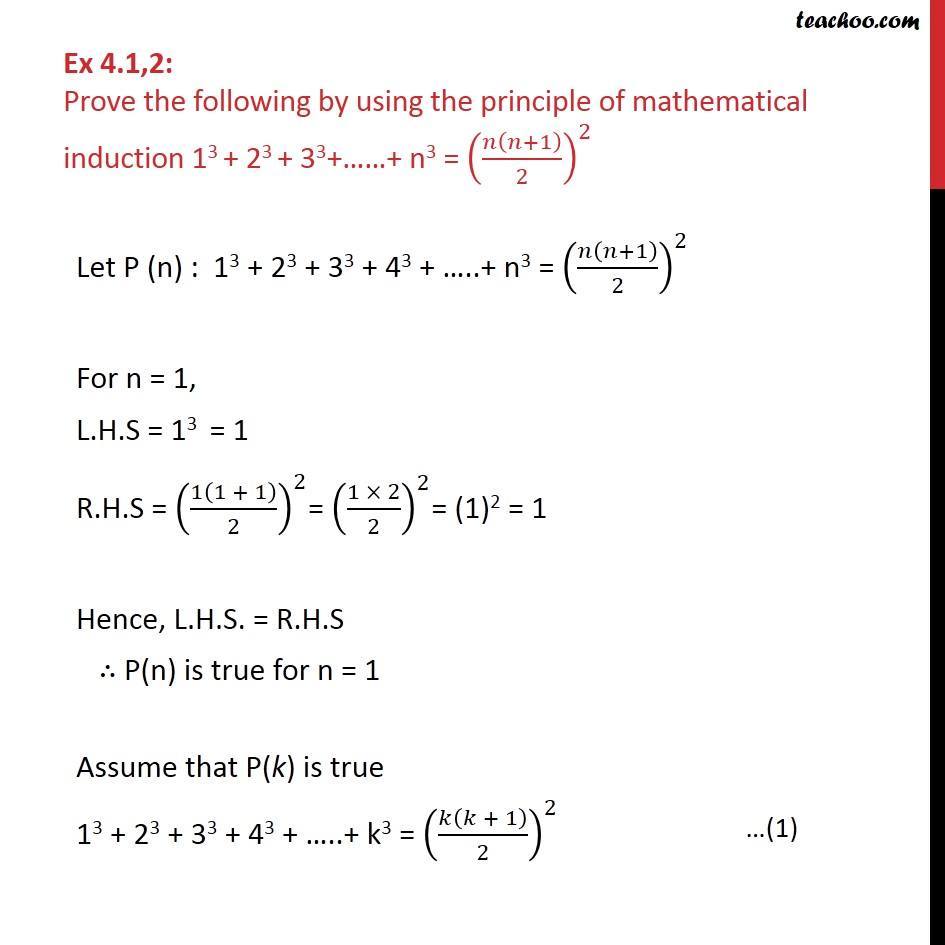



Prove That 1 3 2 3 3 3 N 3 N N 1 2 2 Teachoo
= (n2)!−1, which is the formula for n1 This completes the proof Problem4 Formula for geometric sum Suppose a6= 1 and prove that j=0 aj = an1 −1 a−1 PROOFS BY INDUCTION 5 Solution4 Base case n= 0 The left hand side is just a0 = 1 The right hand side is a−1 a−1 = 1("Karloff's " Memo, p 1 & n3;Which simplifies to n (n 1) / 2 which is what you wanted Hope that helps




Let P N Be The Statement That 1 2 N N N 1 2 For The Positive Integer N A What Is The Statement P 1




5 4 Mathematical Induction T
Dec 23, 17 · Output 131 Note If observed closely, we can see that, if we take n common, series turns into an Harmonic Progression Attention reader!N,NDimethyl25(1H1,2,4triazol1ylmethyl)1Hindol3yl ethanamine Noxide 1 Product Result Match Criteria Product NameSum 1/n^2 Extended Keyboard;




n Sum Formula




Slides Show
Nov 11, 15 · n^36n^2 11n 6 ((n3)(n2)(n1)n!)/(n!) (n3)(n2)(n1) times (n!)/(n!) (n3)(n2)(n1) (n3)(n^23n2) n^33n^22n 3n^29n6 n^36n^2 11n 6Denote f(n) = (n1)(n2)(n3)1 Now assume we have tested up to n=k Then we have to test for n=k1 on the left side we have k(k1)(k2)1, so it's f(k)k On the right side we then have (k1)*k/2 = (k^2k)/2 = (k^2 2k k)/2 = k(k1)k/2 = kf(k) So this have to hold for every k, and this concludes the proofIf 'n' is the number, the factorial is n* (n1)* (n2)* (n3)** ( n n1) Its the product of the number itself (here, 'n') and all the numbers less than 'n' until 1 (because if you multiply the whole thing with 0, there is no point of factorial and 0 is not a positive number) Example Factorial of 5
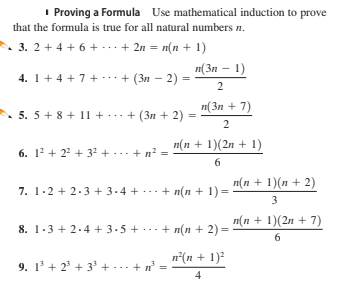



Answered I Proving A Formula Use Mathematical Bartleby




Catalan Number Wikipedia
4 Binomial Expansions 41 Pascal's riTangle The expansion of (ax)2 is (ax)2 = a2 2axx2 Hence, (ax)3 = (ax)(ax)2 = (ax)(a2 2axx2) = a3 (12)a 2x(21)ax x 3= a3 3a2x3ax2 x urther,F (ax)4 = (ax)(ax)4 = (ax)(a3 3a2x3ax2 x3) = a4 (13)a3x(33)a2x2 (31)ax3 x4 = a4 4a3x6a2x2 4ax3 x4 In general we see that the coe cients of (a x)n come from the nThe more exact computation is T(n) \sum((ni)/i) for i = 1 to n (because k is started from i) Hence, the final sum is n n/2 n/n n = n(1 1/2 1/n) n, approximately We knew 1 1/2 1/n = H(n) and H(n) = \Theta(\log(n)) Hence, T(n) = \Theta(n\log(n))May 29, 18 · Transcript Prove 1 2 3 n = (n(n1))/2 for n, n is a natural number Step 1 Let P(n) (the given statement)\ Let P(n) 1 2 3 n = (n(n1))/2 Step




Proof Of 1 2 2 2 Cdots N 2 N 3 3 N 2 2 N 6 Mathematics Stack Exchange




Recursive Algorithms And Recurrence Equations
In statistics, Bessel's correction is the use of n − 1 instead of n in the formula for the sample variance and sample standard deviation, where n is the number of observations in a sampleThis method corrects the bias in the estimation of the population variance It also partially corrects the bias in the estimation of the population standard deviationSynonym 1,3Bis(dimethylamino)benzene, N,N,N′,N′Tetramethylmphenylenediamine, N 1,N 1,N 3,N 3Tetramethylbenzene1,3diamine Empirical Formula (Hill Notation) C 10 H 16 N 2May 29, 18 · Davneet Singh is a graduate from Indian Institute of Technology, Kanpur He has been teaching from the past 10 years He provides courses for Maths and Science at Teachoo



Prove That The Sum From 1 To Of N N 1 N 2 N 3 1 4 Stumbling Robot




Proving Sum I 0 N 2 I 2 N 1 1 By Induction Mathematics Stack Exchange
53 Solving n 2 2n1 = 0 by the Quadratic Formula According to the Quadratic Formula, n , the solution for An 2 BnC = 0 , where A, B and C are numbers, often called coefficients, is given byN3 But, r3 – ( r –1) 3 = r3 – ( r3 –3 r2 3 r –1) = 3 r2 –3 r 1 ∴ ∑ 3 r2 –3 r 1 = 3 ∑ r2 – 3 ∑ r ∑ 1 = 3 ∑ r2 – 3 n ( n 1)/2 n = n3 ∴ 3 ∑ r2 = n3 3 n ( n 1)/2 – n = 2 n3 3 n ( n 1)–2 n 2Theorem 103 (Perron's Formula) Let f(n) be an arithmetic function, and let F(s) = X1 n=1 f(n) ns be the corresponding Dirichlet series Assume that the Dirichlet series F(s) is absolutely convergent 2




Find The Sum Of The Series Sum N 1 Infty Frac 3n 2 N Mathematics Stack Exchange
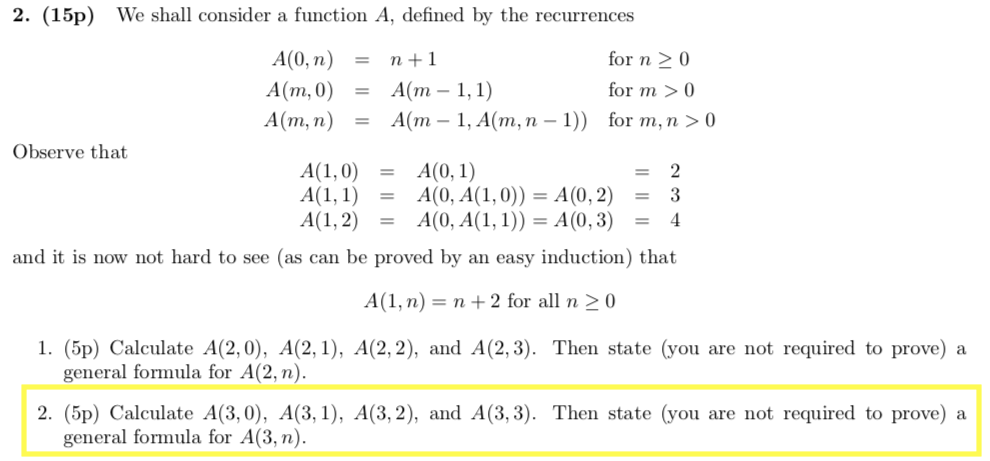



Solved Just Need Help Finding The A 3 N General Formula Chegg Com
Clearly, the first number on the nth line is 1 The second number is n The third number is n(n 1) 1 × 2 In general, the rth number in the nth line is n!May 26, 05 · I am looking for a formula to which I can supply a number N and have it calculate 1234N I realise that I can enter 1 to N in as many cells then use SUM but this won't do for what I need to achieveJan 05, 17 · n ∑ r=1r = 1 2n(n 1) We have;
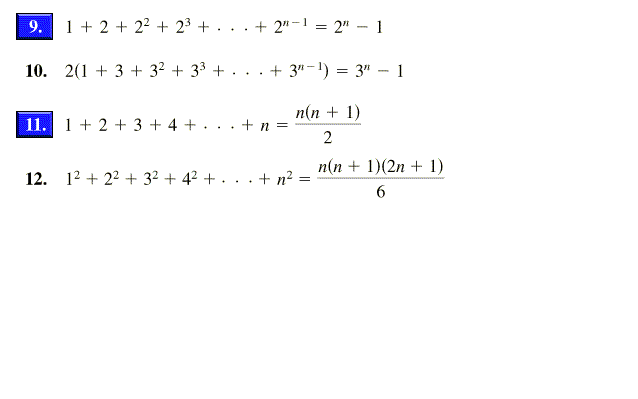



Solved In Exercises 5 18 Use Mathematical Induction To P Chegg Com




Faulhaber S Formula Wikipedia
Nov 27, 07 · 4!The average value of $1,2,3,\dots,n$ is simply $\frac{n1}2$ Thus $123\dotsn=\frac{n(n1)}2$ Of course the proof behind this leads to Gauss's proof quite directly, but nonetheless I really like this restatement of it as it is easy to understand even if one does not know much mathS = 1850 1851 1852 ⋯ = 1850 1851 1852 ⋯ − = 1850 1851(1850 1851 1852 ⋯ ) − = 1 185S − S − 185S = 1 − (185 − 1)S = − 1 n ⋮ share Share a link to this answer Copy link
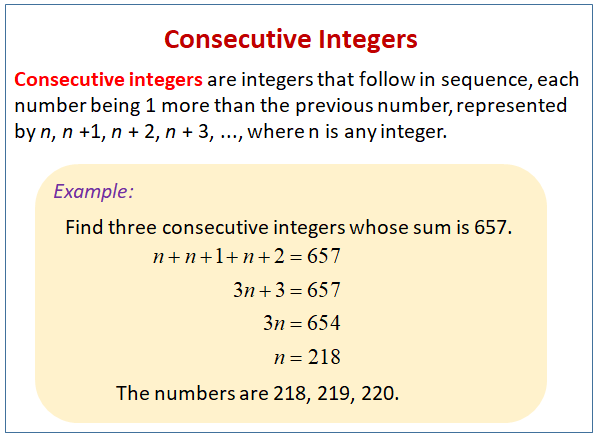



Consecutive Integer Problems Video Lessons Examples And Solutions




Show That 2ncn 2 N 1 3 5 2n 1 N Brainly In
Don't stop learning now Get hold of all the important mathematical concepts for competitive programming with the Essential Maths for CP Course at a studentfriendly price To complete your preparation from learning a language to DSIf it converges, find the limitFor positive values of a and b, the binomial theorem with n = 2 is the geometrically evident fact that a square of side a b can be cut into a square of side a, a square of side b, and two rectangles with sides a and bWith n = 3, the theorem states that a cube of side a b can be cut into a cube of side a, a cube of side b, three a × a × b rectangular boxes, and three a × b × b




Simplifying Factorials With Variables Chilimath




Permutation Formula Qna Mathlibra
In mathematics, the binomial coefficients are the positive integers that occur as coefficients in the binomial theoremCommonly, a binomial coefficient is indexed by a pair of integers n ≥ k ≥ 0 and is written () It is the coefficient of the x k term in the polynomial expansion of the binomial power (1 x) n, and is given by the formula =!!()!For example, the fourth power of 1 x isMar 18, 18 · As noted above, you don't specify if you are talking about the mostly hypothetical nitride ion, N^3, or the azide, N3^, N=N=N^ Notice the difference?Sn = 3n 1 n
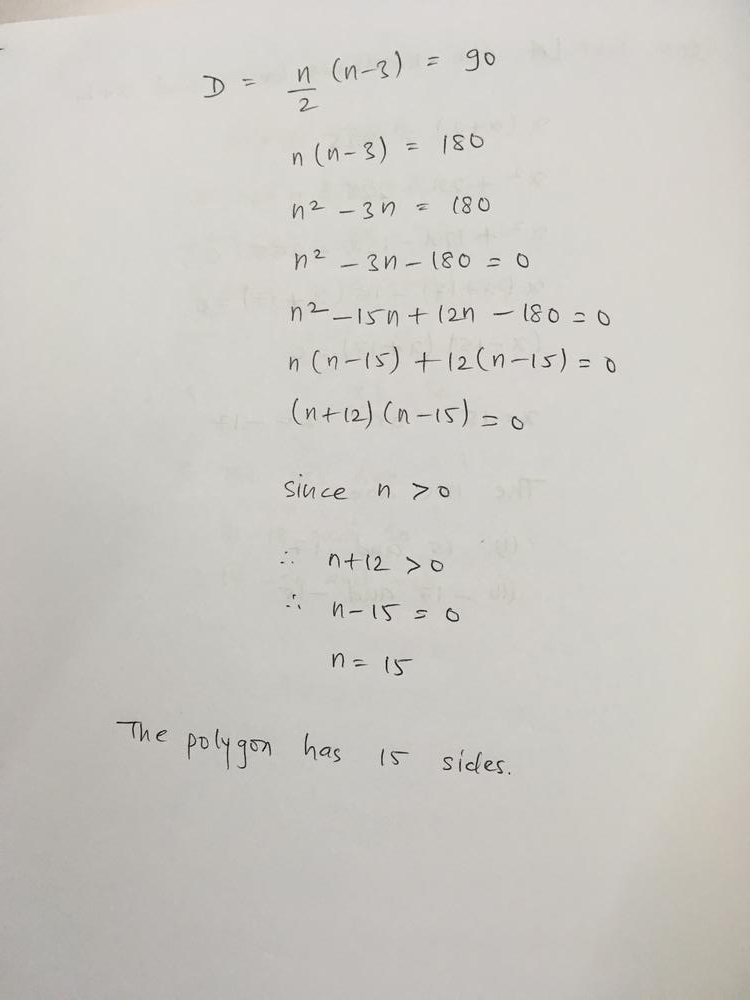



The Number Of Diagonals Of An N Sided Polygon Is Given By The Formula Math D Frac N 2 N 3 Math A Polygon Has 90 Diagonals How Many Sides Does It Have Homework Help And Answers Slader




How To Derive N 1 2 From 1 2 3 N N Quora
Simple and best practice solution for 2(n3)=4n1 equation Check how easy it is, and learn it for the future Our solution is simple, and easy to understand, so don`t hesitate to use it as a solution of your homework If it's not what You are looking for type in the equation solver your own equation and let us solve itSolve for n 32(n4)>1 Simplify Tap for more steps Simplify each term Tap for more steps Apply the distributive property Multiply by Add and Move all terms not containing to the right side of the inequality Tap for more steps Subtract from both sides of the inequalityDivide n^{3}n^{2}2 by n1 to get n^{2}2n2 Solve the equation where the result equals to 0 Substitute 1 for a, 2 for b, and 2 for c in the quadratic formula n=\frac{2±\sqrt{4}}{2} Do the calculations n\in \emptyset Since the square root of a negative number is not defined in the real field, there are no solutions n=1 List all
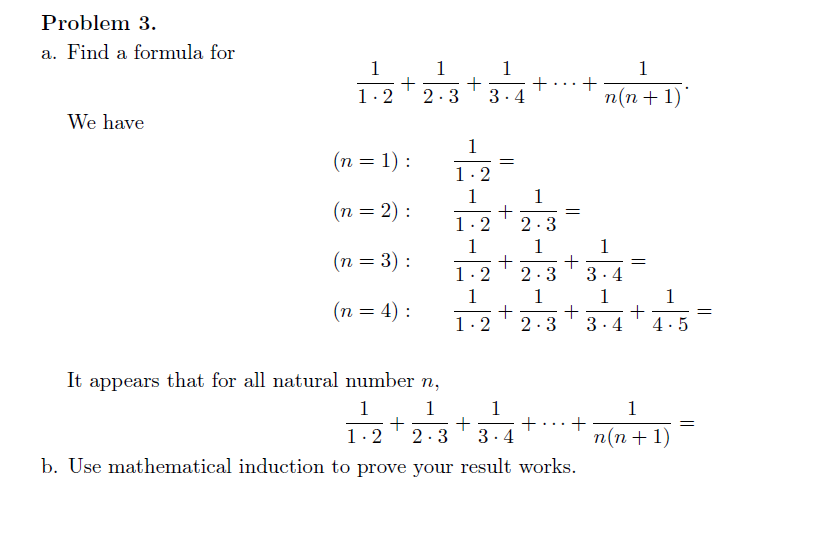



Solved Problem 3 A Find A Formula For 1 2 2 33 4 N N 1 Chegg Com
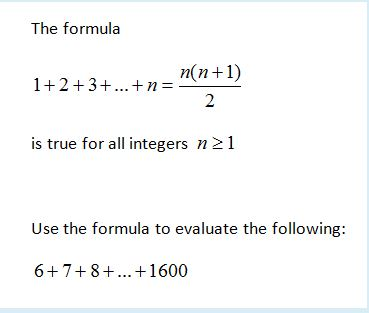



Solved The Formula 1 2 3 N N N 1 2 Is True For All Chegg Com
An= 1/n^2 2/n^2 3/n^2 n/ n^2 1 Express An in closed form (that is a formula in n rather than a summation) and calculate the limit 2 Does the series, infinite sum of An from n=1 to n=infinity converge or diverge?(4 2)!) 4*3*2*1/2*2 = 6 In your case its more simple because you are setting k to always be equal to 2 so it ends up looking like this n!Department's Memo, Exhibit Q) * "FALZ Pharmaceuticals Inc" and "NBC Uniforms", unaffiliated domestic companies in which " Karloff" owned less than 50% of the voting stock ("Karloff's " Memo, p 1 & n4;
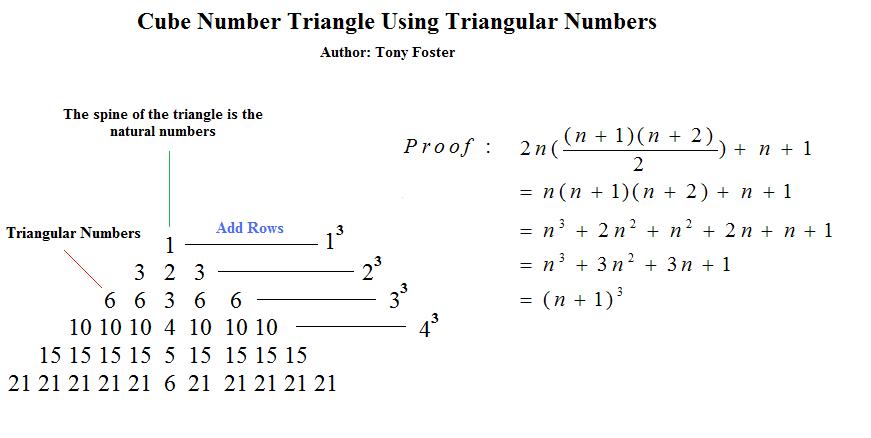



Fascinating Triangular Numbers By Shyam Sunder Gupta




Prove By Induction Sum Of The First N Cubes 1 3 2 3 3 3 N 3 Youtube
In mathematics, Stirling's approximation is an approximation for factorials It is a good approximation, leading to accurate results even for small values of n It is named after James Stirling, though it was first stated by Abraham de Moivre The version of the formula typically used in applications is ln n !Solve your math problems using our free math solver with stepbystep solutions Our math solver supports basic math, prealgebra, algebra, trigonometry, calculus and moreFeb 14, 08 · a)find a formula for 1/1*2 1/2*3 1/n(n1) by examining the values of this expression for small values of n b)prove formula conjured in part a



How To Prove That Math 1 3 3 3 5 3 2n 1 3 2n 4 N 2 Math Using Mathematical Induction Quora




Sum Of N Squares Part 1 Video Khan Academy
Since ∀ i ∈ {1, 2 (k1)} (1i n) < (1i n 1), and since the sum a n 1 has one term more than a n, it is demonstrated that the sequence (1) is monotonic In order to prove part 2, consider again the binomial expansionAug 30, 17 · Find the sum of the first n terms of the series #12(11/n) 3(11/n)^2 4(11/n)^3# Using the agp ( arithmerico geometrico progression ) sum formula?= n log 2 n − n log 2 e O {\displaystyle \log _{2}n
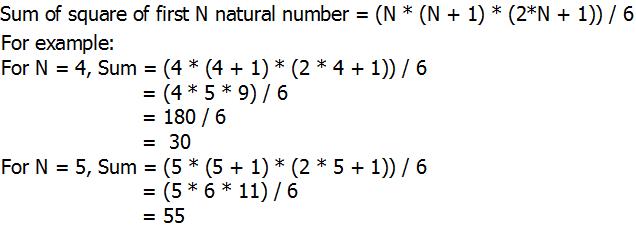



Python Program For Sum Of Squares Of First N Natural Numbers Geeksforgeeks
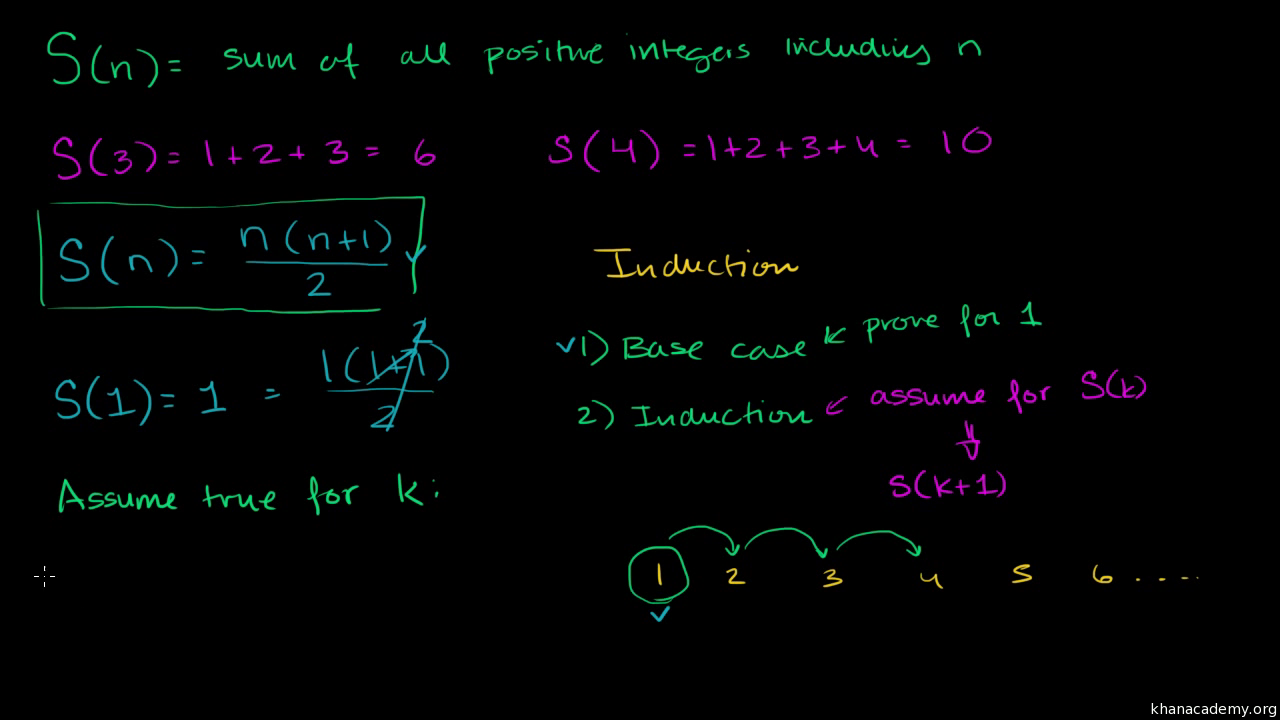



Proof Of Finite Arithmetic Series Formula By Induction Video Khan Academy
Jun 27, 17 · #"using the method of "color(blue)"proof by induction"# #"this involves the following steps "# #• " prove true for some value, say n = 1"# #• " assume the result is true for n = k"#A visual proof that 123n = n (n1)/2 We can visualize the sum 123n as a triangle of dots Numbers which have such a pattern of dots are called Triangle (or triangular) numbers, written T (n), the sum of the integers from 1 to n n 1$a_n$ = $n \times (a_{n1}a_{n2}$) Attempt $ a_2 =6, a_3=24, a_4=1, a_5=7 , a_6 = 5040 $ It so looks like $a_n= (n1)!$ I tried to open $n \times (n1 \times (a_{n2}a_{n3}) a_{n2}$)




Evaluate The Following Limit Lim N Oo 1 N 2 2 N 2 3 N




Stirling Numbers Of The Second Kind Wikipedia
Department's Memo, Exhibit Q) 5 None of the companies identified immediately above was a member ofEach of these series can be calculated through a closedform formula The case a = 1, n = 100 a=1,n=100 a = 1, n = 1 0 0 is famously said to have been solved by Gauss as a young schoolboy given the tedious task of adding the first 100 100 1 0 0 positive integers, S_n = 1234\cdots n = \displaystyle \sum_{k=1}^n kAs I know the formula for adding 1,2,3n is given by n(n1)/2 Comparing to above formula if we want to calculate sum up to n1 , using the above formula we get n1(n11)/2 That is n(n1)/2 Thus the required formula is n(n1)/2




7 Proof By Induction 1 3 5 7 2n 1 N 2 Discrete Prove All N In N Induction Mathgotserved Youtube




Convergent Divergent Geometric Series With Manipulation Video Khan Academy
Means 'n factorial' and is equal to n × (n1) × × 2 × 1 n C r is also often written as and is pronounced "nCompute answers using Wolfram's breakthrough technology & knowledgebase, relied on by millions of students & professionals For math, science, nutrition, history, geography, engineering, mathematics, linguistics, sports, finance, music WolframAlpha brings expertlevel knowledge andSearch results for N,N(2Methyl1,3 phenylene)bis4(2pyridinyll1 pipezazine at SigmaAldrich




Sum To N Terms 1 N 2 N 1 3 N 2 Youtube




Power Series And Polynomial Approximation




Squared Triangular Number Wikipedia
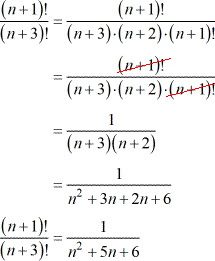



Simplifying Factorials With Variables Chilimath
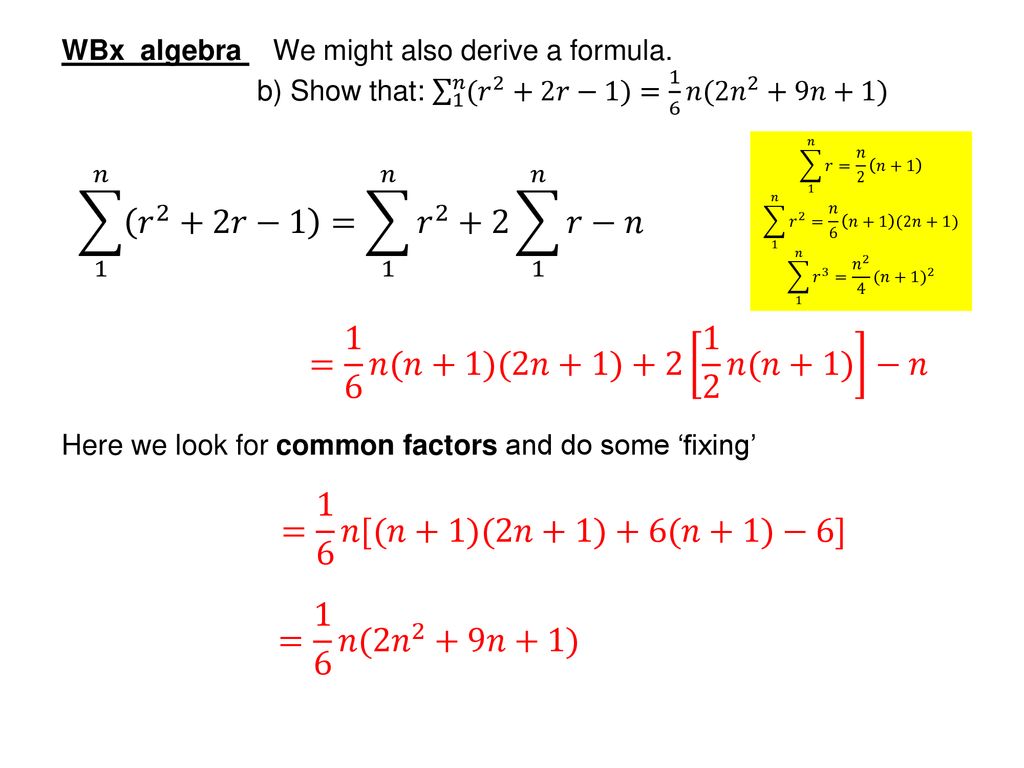



Fm Series Ppt Download



n2 Formula
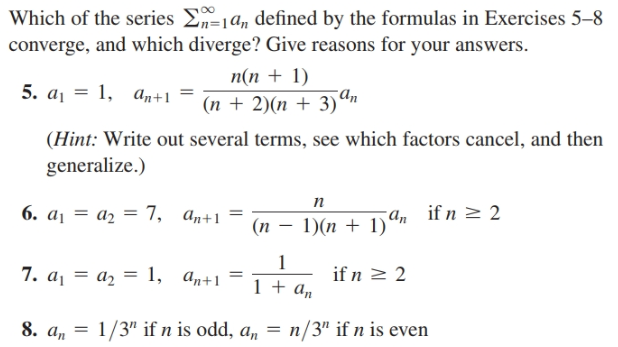



Answered Which Of The Series E 1a Defined By Bartleby




How To Sum The Integers From 1 To N 8 Steps With Pictures




Find Sum Of The Following Ap 1 1 N 1 2 N 1 3 N Upto Nth Terms Brainly In
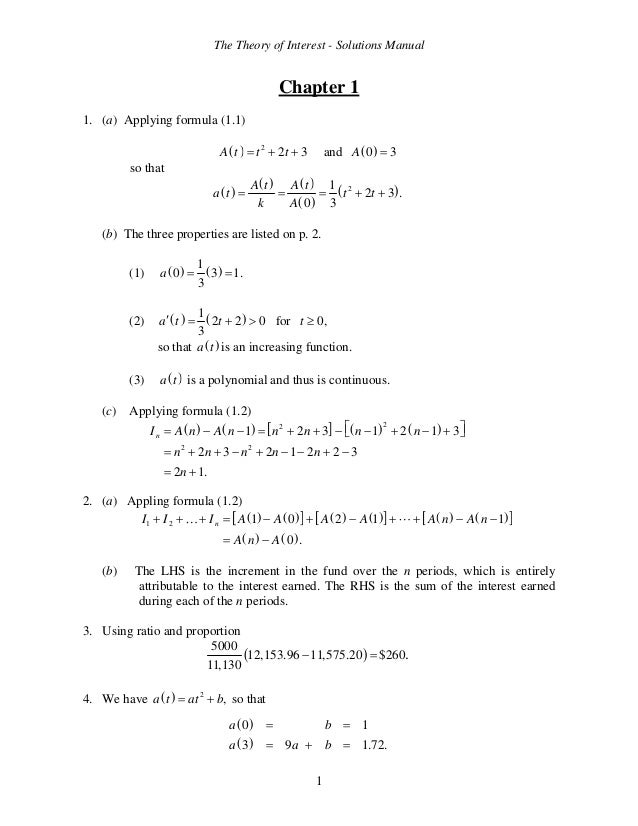



Chapter001
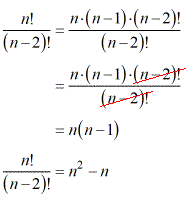



Simplifying Factorials With Variables Chilimath




n2 Formula



Comparison Tests
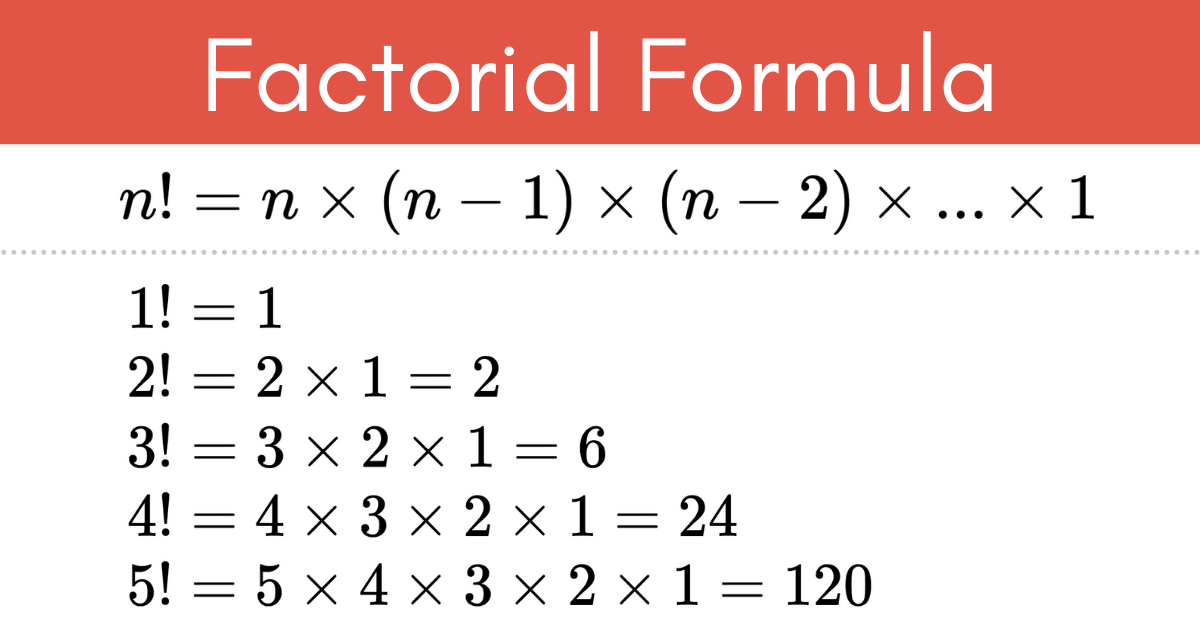



Factorial Calculator Solve N Inch Calculator




n2 Formula




Find The Sum Of First N Squares Difference Equation Approach Ft Max Youtube
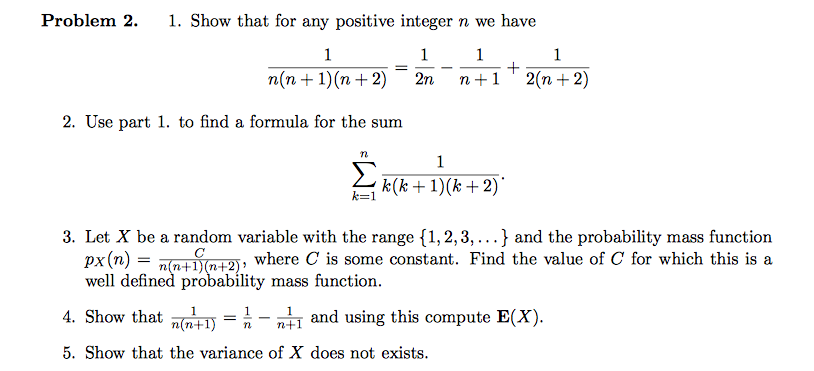



Solved Problem 2 1 Show That For Any Positive Integer N Chegg Com
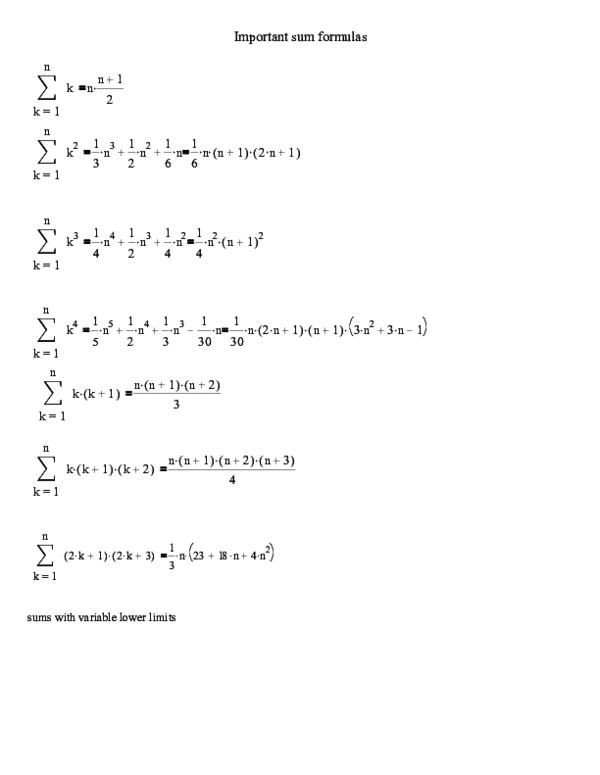



Pdf Important Sum Formulas Omid Motahed Academia Edu




Simple Arrangements Selections Combinations Permutations A Permutation Of N Distinct Objects Is An Arrangement Or Ordering Of The N Objects An Ppt Download




Sum Of N N Or N Brilliant Math Science Wiki
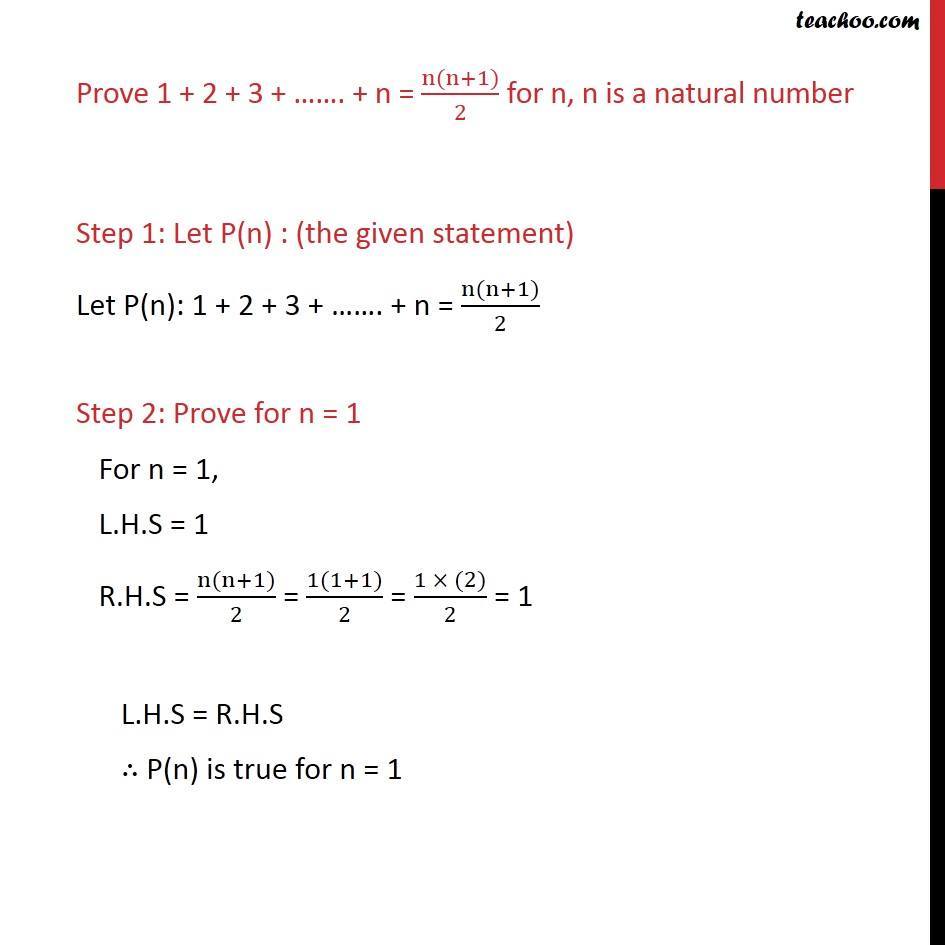



Prove 1 2 3 N N N 1 2 Mathematical Induction




Prove That 1 2 2 2 3 2 N 2 N N 1 2n 1 6 Youtube



2 2 Some Summation Formulas




Program To Find Sum Of First N Natural Numbers Geeksforgeeks
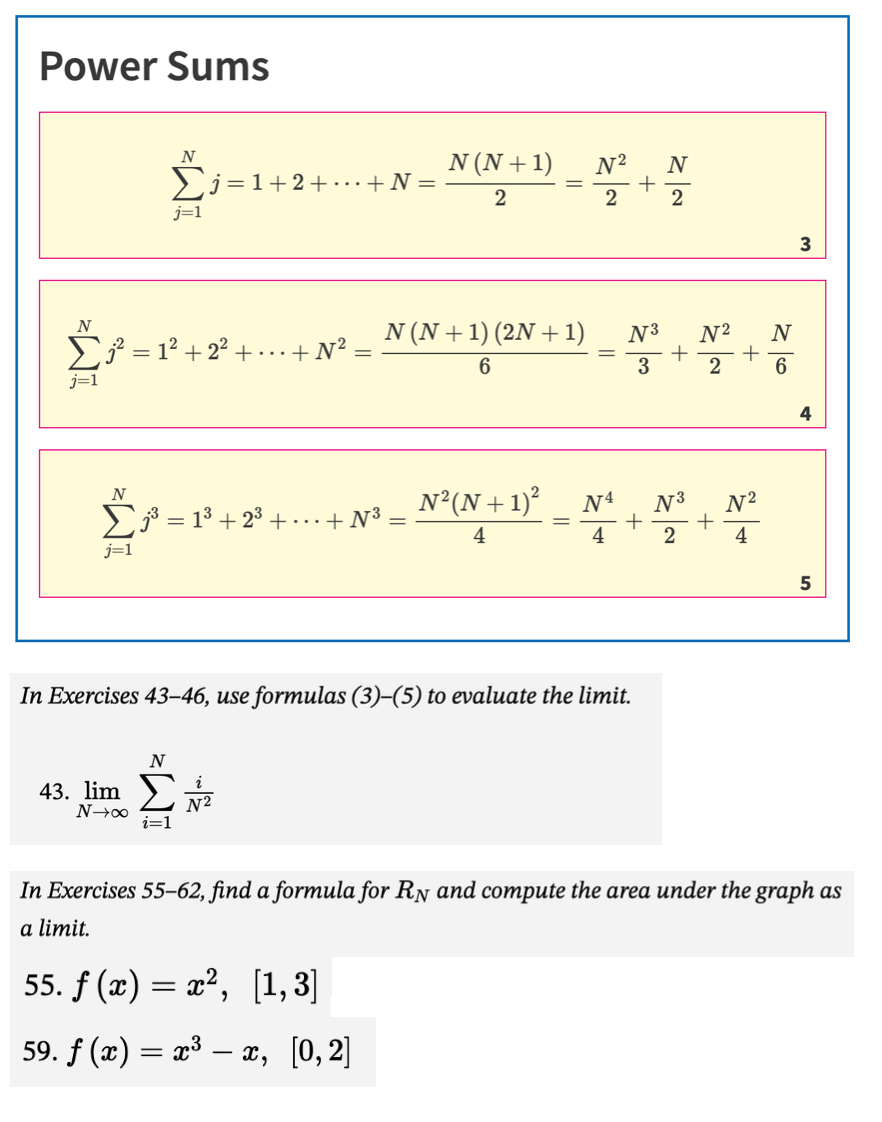



Solved Power Sums Zi 1 2 N N 1 2 N 2 Chegg Com



Binomial Formula Explained




How To 12 Proof By Induction 1 3 2 3 3 3 N 3 N N 1 2 2 N 2 N 1 2 4 Prove Mathgotserved Youtube
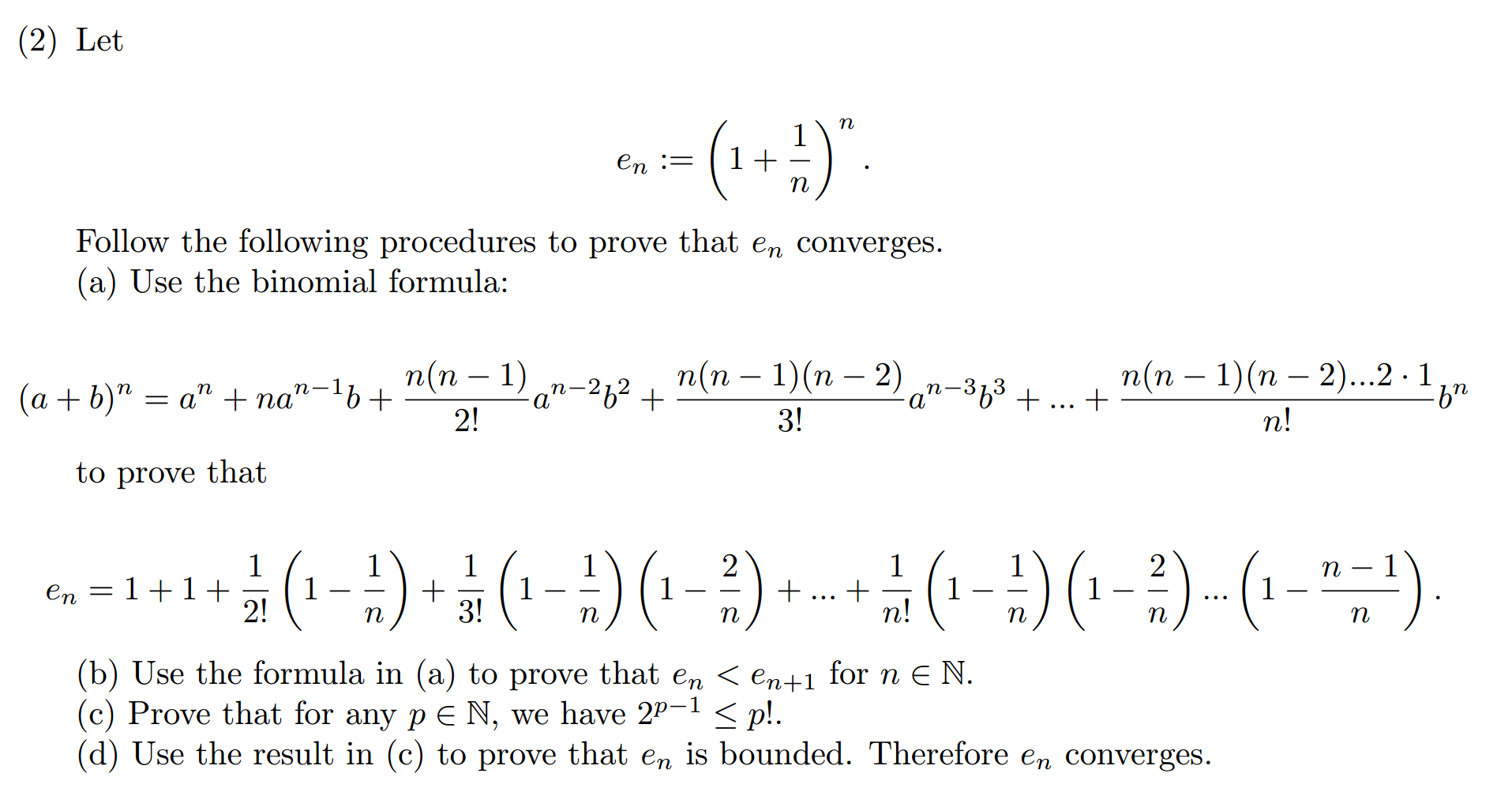



Solved Let E N 1 N 1 N Follow The Following Proced Chegg Com
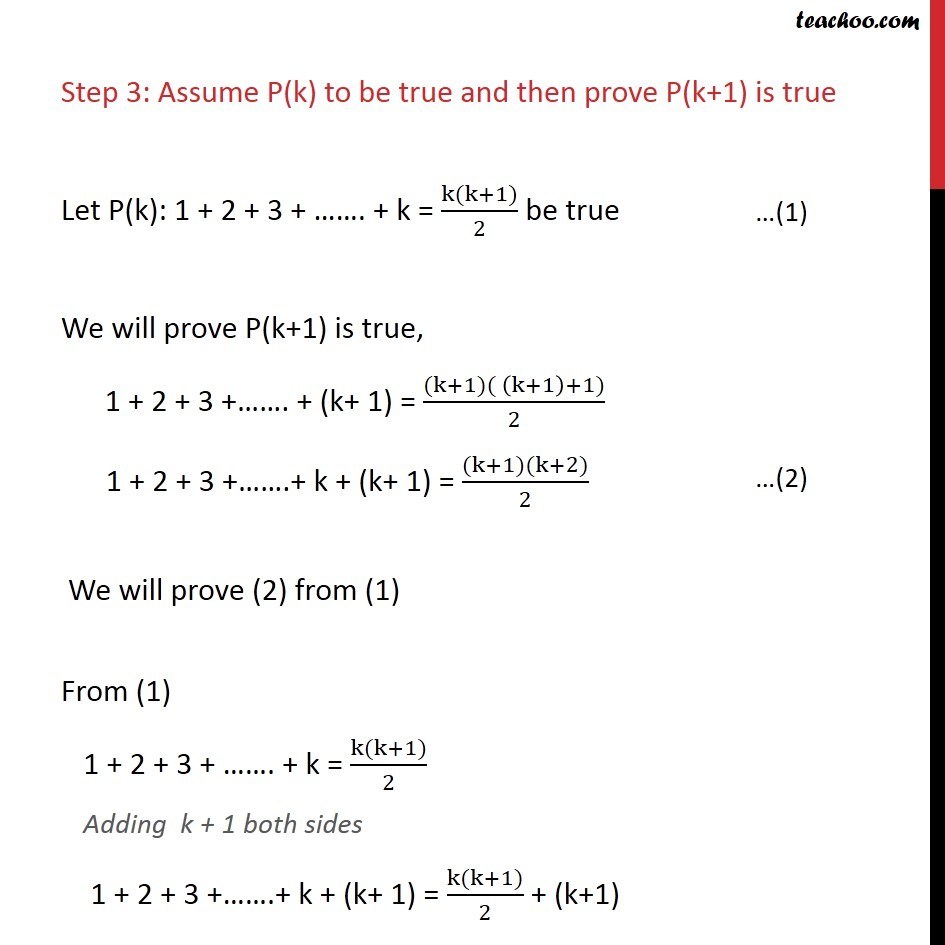



Prove 1 2 3 N N N 1 2 Mathematical Induction




Sum Of N N Or N Brilliant Math Science Wiki




Proofs Without Words Mathoverflow
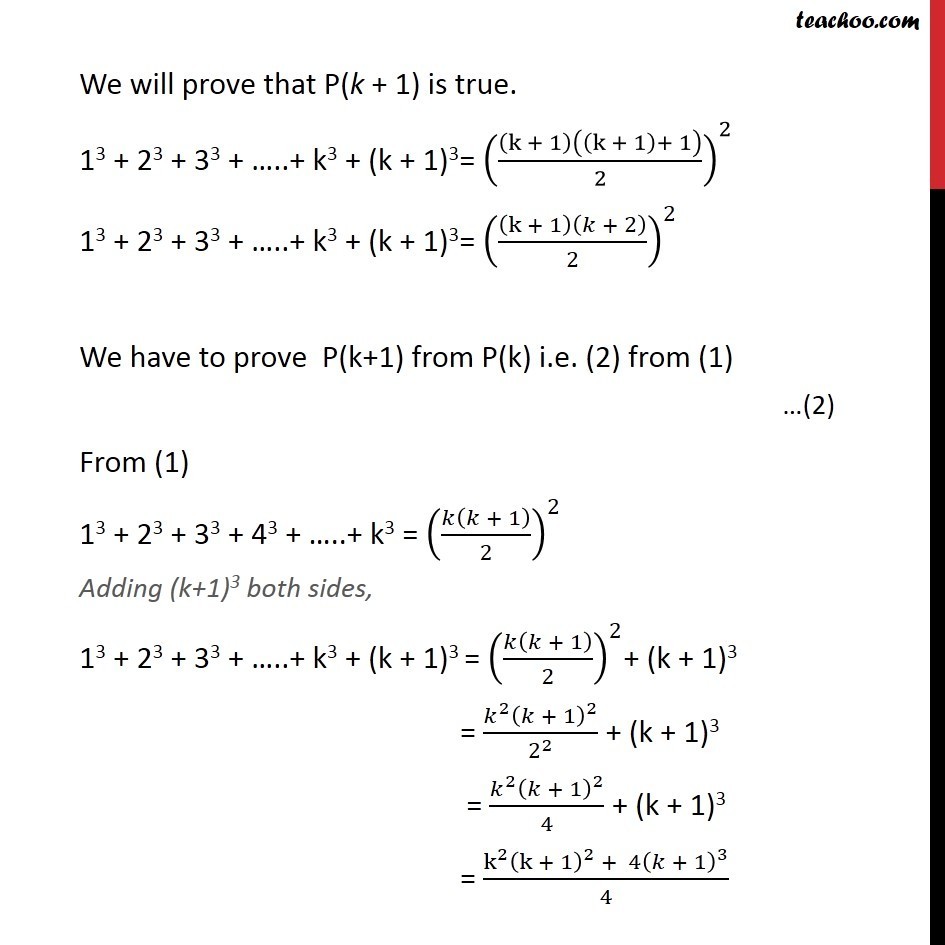



Prove That 1 3 2 3 3 3 N 3 N N 1 2 2 Teachoo



What Is The Value Of N In N N 1 N 2 N 3 840 Quora




Pdf An Alternative To Faulhaber S Formula



How To Evaluate The Sum Of N 2 2 N From N 1 To Infinity Quora




The Catalan Numbers And Their Applications 1 2
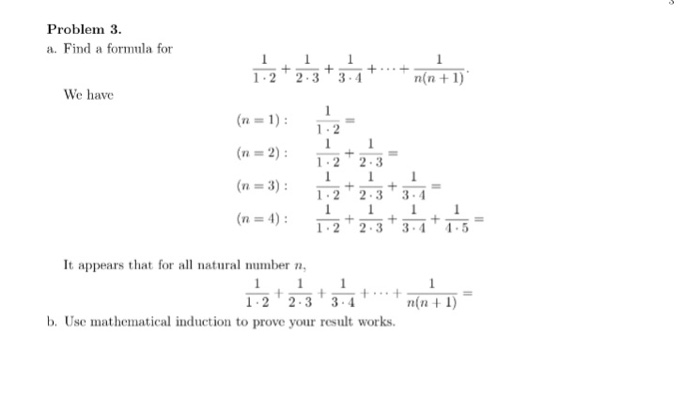



1234n Formula



Finding The Sum Of Consecutive Numbers




1234n Formula




If In The Expansion Of 1 X M 1 X N The Coefficients Of X And X 2 Are 3 And 6 Find Value Of M And N Mathematics Stack Exchange
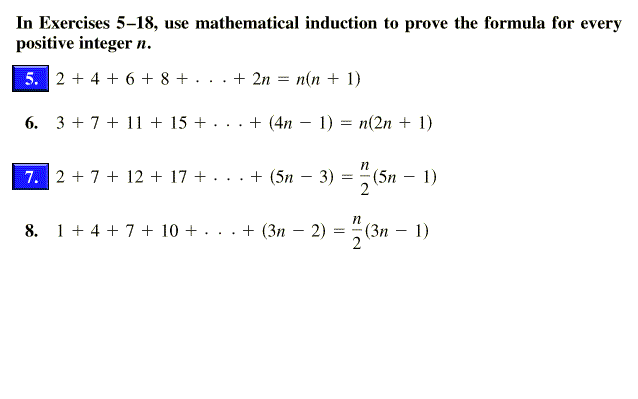



Solved In Exercises 5 18 Use Mathematical Induction To P Chegg Com
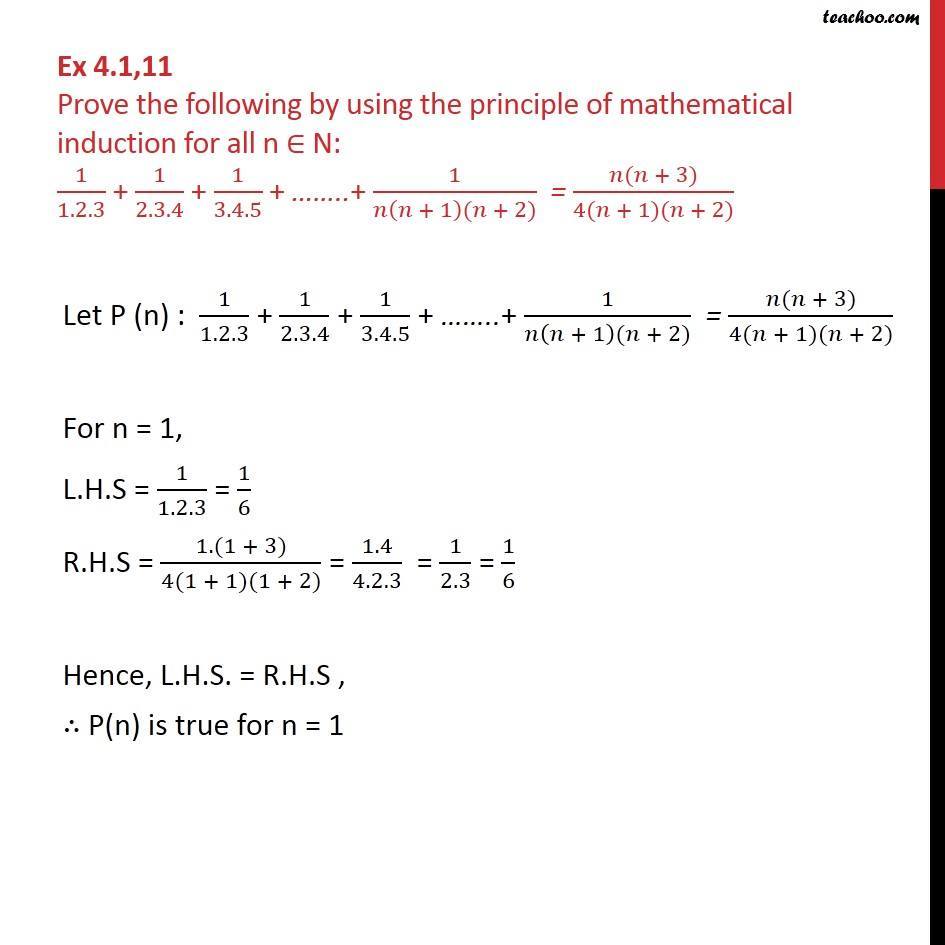



Ex 4 1 11 Prove 1 1 2 3 1 2 3 4 1 3 4 5 1 N N 1 N 2




Which Expression Is Equivalent To The Given Expression 2n 6 A
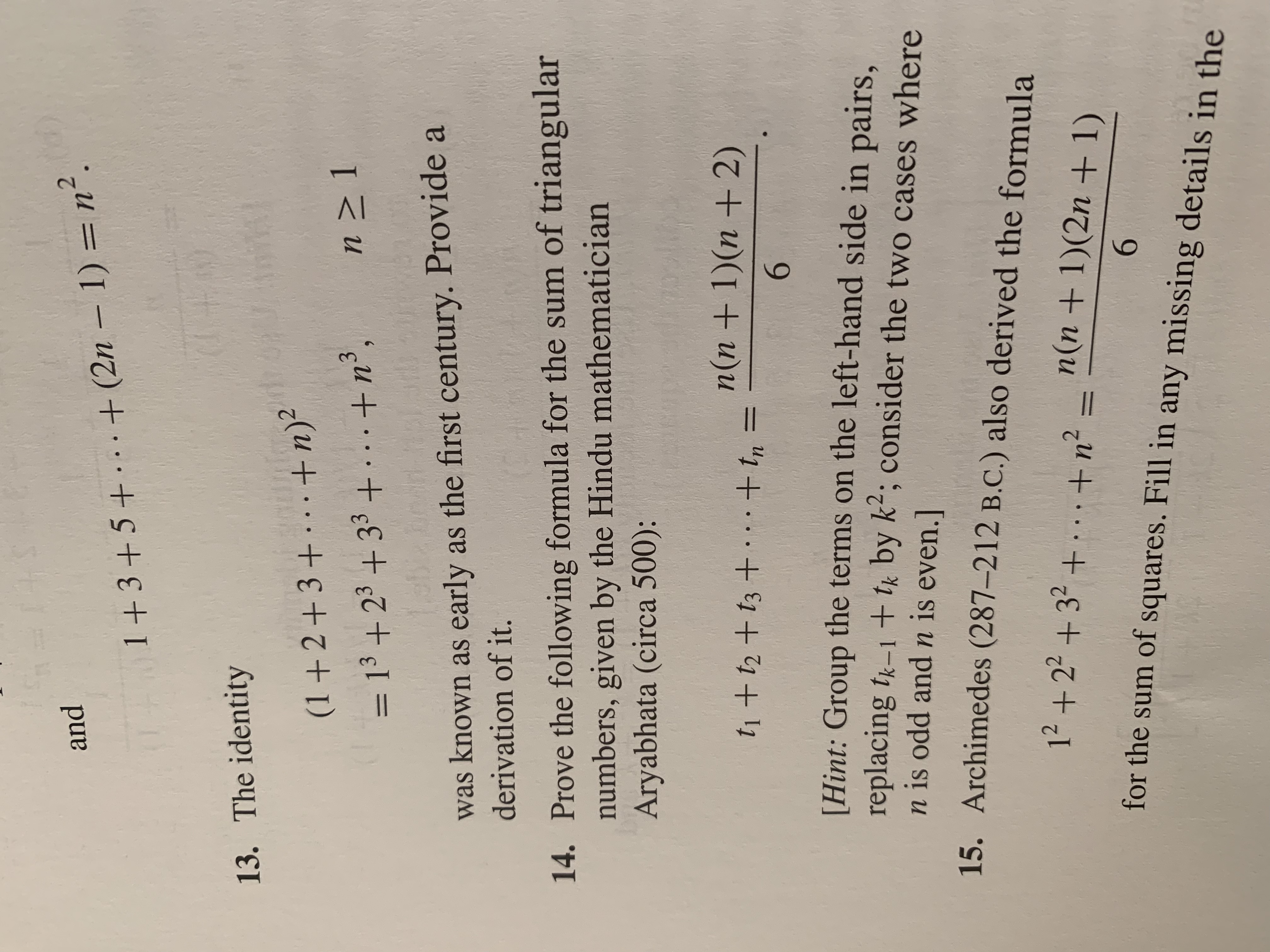



Answered And N 2n 1 N 1 3 5 13 The Bartleby




1234n Formula




Stirling Numbers Of The First Kind Wikipedia



Factorials Definition Formula Solved Example Problems Exercise Mathematics




Lim N Oo N 1 N 2 N 3 3n N 2n 1 N Is Equa
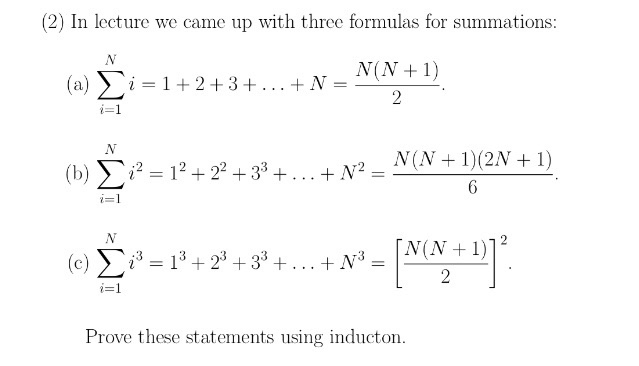



Solved In Lecture We Came Up With Three Formulas For Summ Chegg Com




Solve 3p N 4 P N 1 5 Factorial Permutation Equation Youtube
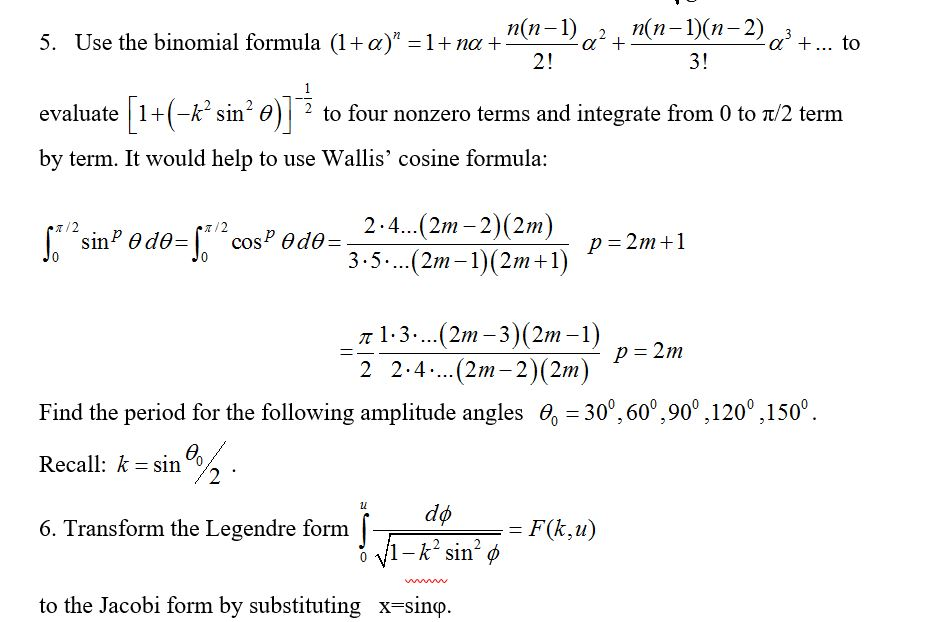



Solved Use The Binomial Formula 1 Alpha N 1 N Alp Chegg Com



What Does S Stand For In The Formula S N 2a N 1 D 2 Quora




How To Evaluate The Sum Of N 2 N From N 1 To Infinity Quora


コメント
コメントを投稿